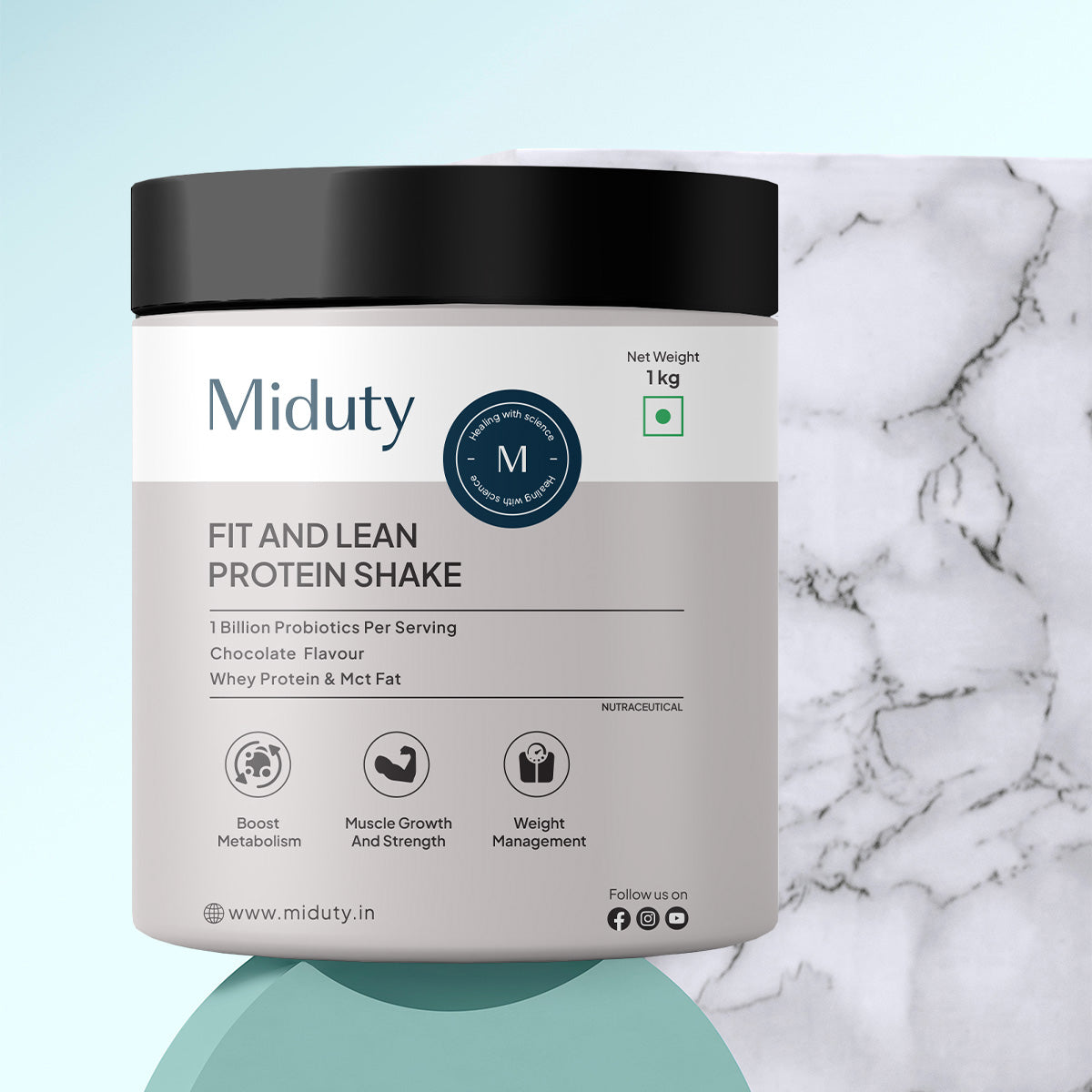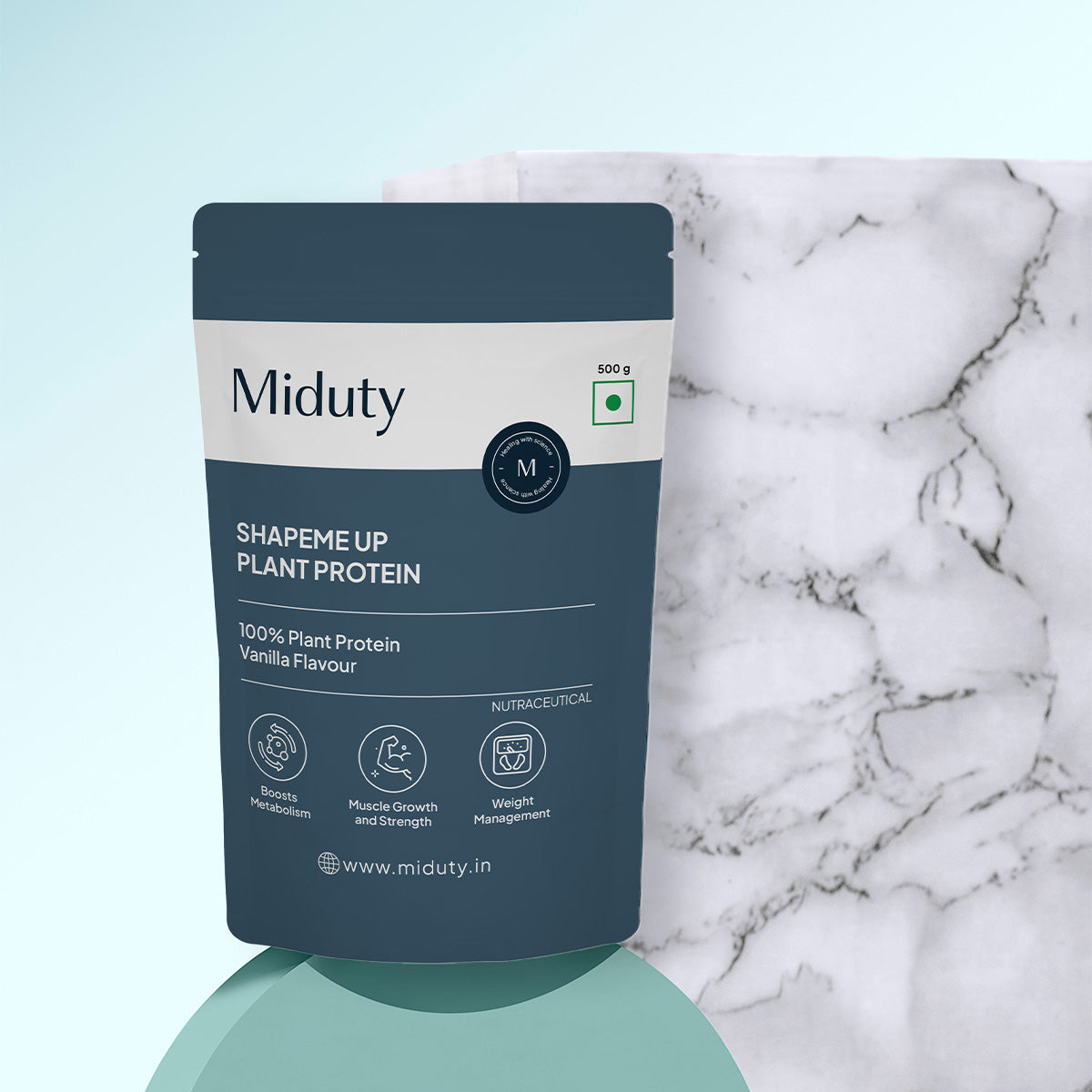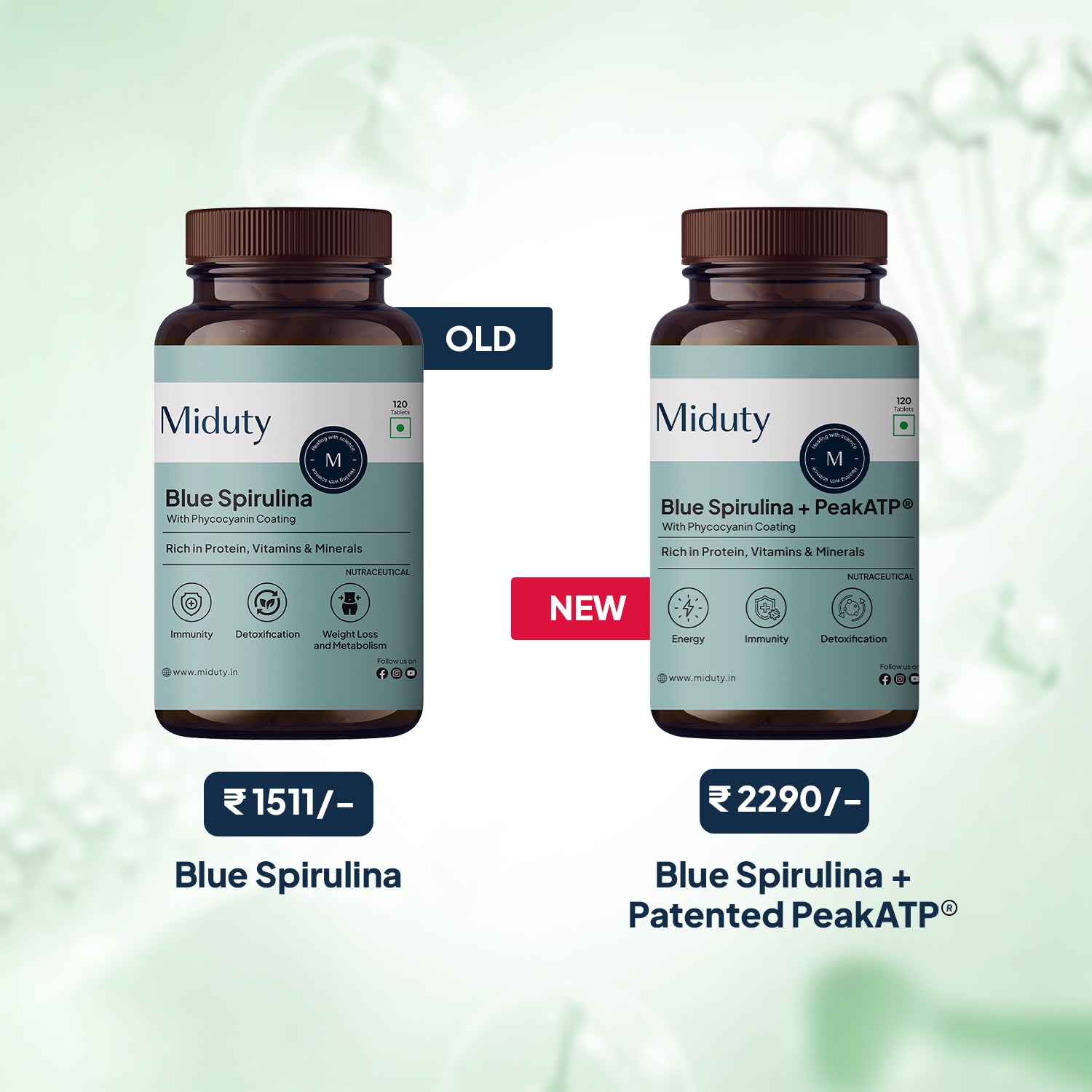
Clean Protein vs Regular Protein: What’s the Difference?
In today's wellness-driven world, protein is one of the most talked-about nutrients. From athletes to everyday health enthusiasts, everyone recognizes the importance of protein for muscle growth, recovery, and overall well-being. However, as consumers have become more conscious about what they put into their bodies, a new term has gained popularity — "clean protein."
You've likely seen this phrase on supplement labels, health blogs, and influencer posts. But what does "clean" really mean in the context of protein? Is it simply a marketing buzzword, or does it represent a meaningful difference in quality and health impact? And how does it truly compare to the traditional or "regular" protein we've been using for years?
Let's break down what sets these two apart and uncover which one is better suited for your goals.
Key Takeaways
1. Clean protein prioritizes purity and sustainability. It is derived from responsibly sourced, non-GMO, and minimally processed ingredients, with a strong emphasis on environmental responsibility and ethical production.
2. Regular protein focuses on efficiency and affordability. Traditional protein powders often come from mass-produced sources and may include artificial additives, making them more accessible but less "clean" in composition.
3. Processing methods make a major difference. Clean protein uses gentle techniques like cold-pressing or fermentation to preserve nutrients, while regular protein may involve high heat or chemical extraction that can reduce nutritional integrity.
4. Clean protein is easier on digestion and better for sensitive individuals. Since it avoids artificial sweeteners, fillers, and dairy components, clean protein is typically more gut-friendly compared to regular protein options that may cause bloating or discomfort.
5. Choosing the right protein depends on your goals and values. Clean protein suits those who value wellness, sustainability, and ingredient transparency, whereas regular protein remains a practical, budget-friendly option for performance-focused users.
What Is Clean Protein?
Clean protein refers to protein sources and products that emphasize purity, ethical sourcing, and minimal processing. The concept goes beyond just nutrition—it's about being conscious of how the protein is made, what ingredients are used, and how it impacts both your body and the planet.
Clean protein is often derived from natural, responsibly sourced ingredients. In the case of animal-based protein, this typically means grass-fed cows, free-range chickens, or wild-caught fish that are raised without antibiotics, hormones, or genetically modified feed.
For plant-based varieties, clean protein comes from non-GMO, pesticide-free sources such as peas, hemp, brown rice, pumpkin seeds, or quinoa.
The production process for clean protein focuses on retaining nutritional integrity. Manufacturers often use cold-pressing, fermentation, or natural isolation methods instead of harsh chemical treatments. This ensures that the protein maintains its amino acid structure and micronutrient content, providing a purer, more bioavailable form of nutrition.
Another major element of clean protein is what it doesn't contain. Clean protein products are generally free from artificial sweeteners, synthetic flavors, fillers, or preservatives. Instead, they rely on natural ingredients for taste and texture—sweeteners like stevia or monk fruit, and flavorings from real vanilla, cocoa, or fruit extracts.
Clean protein also reflects a growing environmental and ethical awareness. Many brands highlight sustainable practices such as using renewable energy, eco-friendly packaging, and transparent supply chains. Consumers are increasingly drawn to this level of honesty and accountability—knowing exactly where their protein comes from and how it's made.
In essence, clean protein is not just about fueling your muscles; it's about supporting your body, respecting the planet, and choosing a healthier, more transparent lifestyle.
What Is Regular Protein?
Regular protein, on the other hand, refers to the traditional protein powders and supplements that have dominated the market for decades. These are typically made from mass-produced animal or plant sources, such as conventional dairy farms for whey and casein or large-scale soybean production for soy protein isolate.
The focus of regular protein is often on efficiency, cost-effectiveness, and performance, rather than ingredient purity or sustainability. For instance, whey protein, one of the most popular forms, is a byproduct of cheese manufacturing. While it's highly effective for muscle recovery and growth, its production process often involves high heat, acid treatments, and filtration systems that can reduce some natural nutrients.
In many regular protein products, artificial additives are used to enhance flavor, mixability, and shelf life. Ingredients like sucralose, aspartame, maltodextrin, and artificial flavors are common. These additives help improve texture and sweetness, but they also make the product more processed and, for some individuals, harder to digest.
Regular protein products may also include thickeners, gums, and anti-caking agents to improve consistency and stability. While these are not necessarily harmful, they don't align with the "clean label" philosophy that emphasizes simplicity and transparency.
Additionally, the environmental impact of regular protein production can be significant. Conventional dairy and meat farming require more land, water, and energy, and they contribute to higher greenhouse gas emissions. However, due to large-scale manufacturing, regular protein remains cheaper and more widely accessible than clean alternatives.
To summarize, regular protein is still an excellent source of amino acids and muscle fuel, but it often comes with trade-offs in terms of processing, additives, and sustainability.
Clean Protein vs Regular Protein: The Key Differences
Now that we've looked at both types, let's explore how clean and regular proteins differ across several key dimensions—from ingredient quality and digestibility to environmental impact and cost.
1. Ingredient Quality and Sourcing
Clean protein emphasizes ethically sourced, non-GMO, and organic ingredients, often from small-scale producers who prioritize transparency. In contrast, regular protein relies on industrial-scale farming and conventional sources, which may include exposure to pesticides, antibiotics, or hormones.
Clean protein brands often disclose the origin of their ingredients, while regular protein products may not provide detailed sourcing information. [1]
2. Processing and Purity
The methods used to extract protein play a significant role in its quality. Clean protein typically undergoes minimal processing, such as cold-pressing or fermentation, which helps retain more of the original nutrients. Regular protein, by contrast, is usually heat-treated or chemically processed to reduce production costs, sometimes compromising nutrient integrity.
Clean protein maintains a more natural amino acid structure and often has fewer chemical residues or additives. [1]
3. Additives and Sweeteners
Clean protein is known for avoiding artificial sweeteners, preservatives, and synthetic flavors. It uses natural alternatives for sweetness and taste, providing a simpler ingredient list that supports clean eating.
Regular protein often contains artificial flavors, colors, and chemical sweeteners that can make it taste better but might trigger digestive discomfort in sensitive individuals.
4. Digestibility and Gut Health
Since clean protein avoids unnecessary fillers and additives, it's often easier to digest and gentler on the gut. Many clean protein formulations are dairy-free, gluten-free, and hypoallergenic, making them suitable for people with food sensitivities.
Regular protein, particularly whey concentrate, can cause bloating, gas, or discomfort in individuals who are lactose intolerant or sensitive to artificial ingredients. [1]
5. Environmental Impact
One of the standout advantages of clean protein is its commitment to sustainability. From eco-conscious farming practices to recyclable packaging, clean protein brands aim to reduce their carbon footprint.
Regular protein, however, often stems from large-scale animal agriculture, which contributes significantly to greenhouse gas emissions, deforestation, and resource depletion.
6. Cost and Accessibility
Clean protein products tend to be more expensive due to organic certification, sustainable sourcing, and limited-scale production. They cater to consumers who are willing to invest in quality and transparency.
Regular protein, on the other hand, is more affordable and widely available, making it an attractive choice for athletes, students, and budget-conscious buyers.
7. Nutritional Value
Both clean and regular proteins deliver complete amino acid profiles essential for muscle repair and growth. However, because clean proteins undergo less processing, they may retain more micronutrients and natural compounds, such as antioxidants and enzymes.
The difference in macronutrients (protein, carbs, and fats) is usually minor, but clean proteins often score higher on overall nutrient density and digestibility.
Clean Protein vs Regular Protein: Comparison Table
|
Factor |
Clean Protein |
Regular Protein |
|
Source |
Ethically and sustainably sourced (organic, grass-fed, non-GMO) |
Conventional farms or industrial production |
|
Processing |
Minimally processed; cold-pressed or fermented |
Heavily processed; may involve chemical extraction |
|
Additives |
Free from artificial sweeteners, flavors, and preservatives |
Often includes artificial sweeteners, flavors, and fillers |
|
Digestibility |
Easy on the stomach; suitable for sensitive individuals |
May cause bloating or discomfort, especially if dairy-based |
|
Environmental Impact |
Lower carbon footprint and sustainable practices |
Higher environmental impact due to mass farming |
|
Nutritional Retention |
Retains natural nutrients and enzymes |
Some nutrient loss during processing |
|
Cost |
More expensive due to premium sourcing |
More affordable and mass-produced |
|
Transparency |
Full ingredient and source disclosure |
Limited ingredient origin details |
|
Health Focus |
Prioritizes wellness and clean eating |
Focuses mainly on protein quantity and performance |
|
Best For |
Health-conscious, eco-friendly consumers |
Cost- or performance-focused individuals |
Which One Should You Choose?
Choosing between clean and regular protein depends on your personal goals, values, and dietary preferences.
If you're someone who values purity, sustainability, and overall wellness, clean protein is worth the investment. It offers peace of mind knowing that your protein comes from transparent, ethically sourced ingredients and supports both your health and the environment.
However, if your priority is performance and affordability, regular protein still serves its purpose effectively. It's convenient, widely available, and provides the amino acids your body needs for muscle recovery and strength gains.
In reality, many people find balance by using both—clean protein for daily wellness and regular protein for workouts or meal supplementation when convenience and cost matter most.
Final Thoughts
The debate between clean protein and regular protein isn't about which one is "good" or "bad." Both serve a purpose, and both can help you reach your fitness and nutrition goals.
What sets clean protein apart is its commitment to quality, transparency, and environmental responsibility. It represents a shift toward mindful consumption — where people care not only about what they eat but also how it's made and its impact on the planet.
So, the real difference goes beyond just nutrition. Clean protein reflects a lifestyle choice — one that values health, honesty, and sustainability. Whether you're blending it into a smoothie or shaking it up post-workout, knowing what's in your protein (and where it came from) can make all the difference.
FAQ's on Clean vs Regular Protein -
Q1 - What is the difference between clean and regular protein?
Clean protein refers to protein sources free from artificial additives, fillers, GMOs, and chemicals, typically from natural or organic sources. "Regular protein" may include processed options with added sugars, artificial ingredients, or conventionally raised animal products. The key difference lies in processing and ingredient purity.
Q2 - Is clean protein good for you?
Yes, clean protein is good for you because it is free from harmful contaminants like heavy metals and pesticides, making it a high-quality and healthier way to supplement protein intake. Both whole food sources and supplements that are transparent about their ingredients are considered clean, providing essential amino acids for muscle repair and overall vitality.
Q3 - What does clean protein mean?
Clean protein refers to minimally processed protein sources free from artificial additives, preservatives, heavy metals, and other contaminants. It applies to both whole foods and supplements that prioritize purity, often emphasizing qualities like organic, non-GMO, or responsibly raised sourcing.
Q4 - Is whey protein a clean protein?
Whey protein can be considered clean since it's a high-quality, complete protein from milk, but its purity depends on processing and ingredients. Some products include unnecessary additives, while unflavored or raw versions are minimally processed and generally cleaner. Choosing a reputable, third-party tested brand ensures purity and safety from contaminants like heavy metals or banned substances.
Q5 - What is clean protein vs organic protein?
Clean protein focuses on what's not in the product—like artificial ingredients, pesticides, or heavy metals while organic protein refers to ingredients grown without synthetic chemicals or GMOs. A protein can be both clean and organic, but not always; organic products may still contain contaminants, and clean ones aren't necessarily organic.
Q6 - How can I identify a clean protein powder?
To identify a clean protein powder, look for third-party certifications like NSF Certified for Sport, a short ingredient list without artificial sweeteners or fillers, and minimal added sugar or fat. Check the protein source and, if choosing organic options, confirm they've been tested for heavy metals.
Q7 - Is clean protein healthy?
Yes, clean protein is healthy because it's low in contaminants like heavy metals, pesticides, and additives, supporting overall wellness and reducing related health risks. Prioritizing whole food sources and supplements with minimal, clearly labeled ingredients helps ensure a clean, healthy protein intake.
References
| Sr. No. | Reference Links |
| 1. | Protein Quality in Perspective: A Review of Protein Quality Metrics and Their Applications |










